Opening date 1952 Height 55 m Length 535 m | Opened 1952 Impound Arghandab River | |
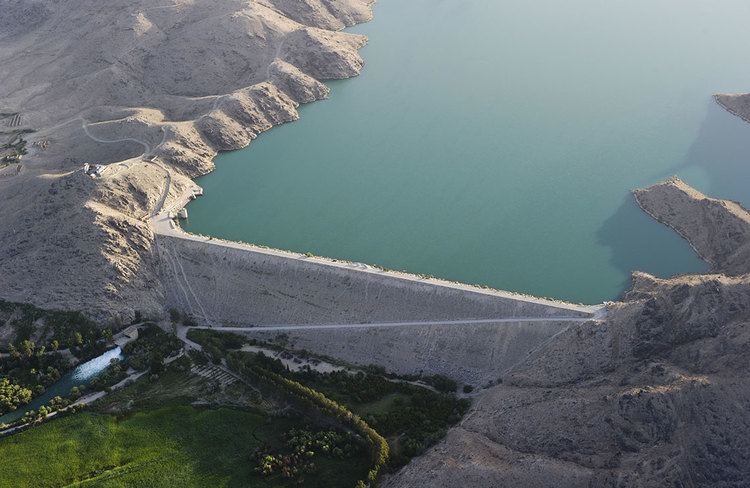 | ||
Similar Kajaki Dam, Darunta Dam, Naghlu Dam, Band‑e Sardeh Dam, Chaki Wardak Dam | ||
Us army corps of engineers 77 construction company dahla dam improvement project phase 1
The Dahla Dam is the largest dam in Kandahar Province, and the second largest in Afghanistan. It was built in 1952. Over the years during the wars due to neglect the project was subject to siltation of the reservoir, the canal system and other appurtenant works which reduced its irrigation benefits. This necessitated undertaking rehabilitation of the project which was envisaged in two phases with the first phase involving desiltation works and pertinent components of the project to improve the water delivery system; this component was completed during March 2012 with full assistance provided by the Government of Canada. The second phase involves raising the height of the dam and the relevant dykes to compensate for the loss of storage in the dam due to siltation, and to achieve the full benefits of irrigation for which the dam was originally built. This component is now under implementation with financial and technical support from the US government
Contents
- Us army corps of engineers 77 construction company dahla dam improvement project phase 1
- Dahla dam irrigation release
- Location
- As built features
- Rehabilitation
- Phase 1
- Phase 2
- References
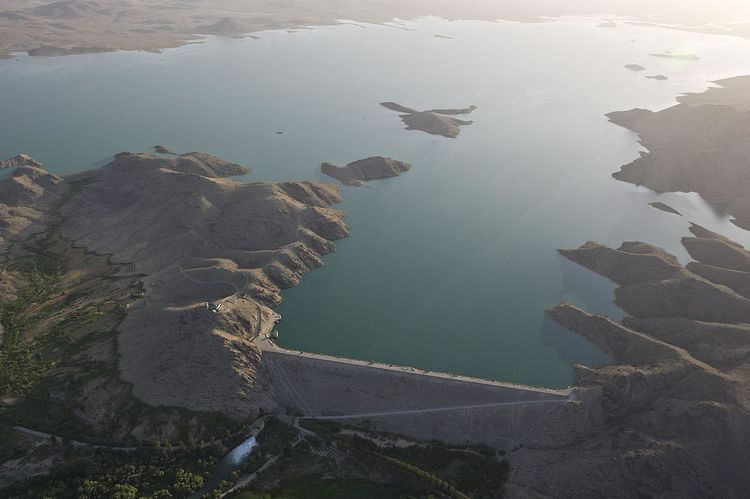
Dahla dam irrigation release
Location
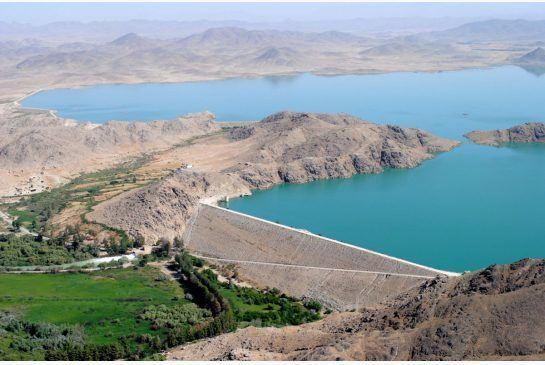
The dam is 34 kilometres (21 mi) north of the Kandahar City in the Kandhar Province. It is built on the Arghandab River which flows over a length of 250 miles (400 km).
As built features

The Dahla Dam was first built with full funding and technical support provided by the US government, between 1950 and 1952 during the reign of Zahir Shah, the last King of Afghanistan. The dam is an embankment structure made of earth and rock fill. It is 55 metres (180 ft) in height. The length of the dam at the crest is about 535 metres (1,755 ft). In the periphery of the dam six saddle dams have been built which together measure 2,040 metres (6,690 ft) and with varying heights of 15–25 metres (49–82 ft). To pass the design flood discharge two spillway structures have been built. To release water for irrigation to the canal system low level sluices have been built at the downstream toe of the dam with two control valves of the Howell-Bunger type which function as energy dissipation bypass valves. The reservoir created by the dam has a storage capacity of 314 MCM. The irrigation system designed to provide irrigation to 30,000 hectares (74,000 acres) of land in the Kandahar province consisted of 77.6 kilometres (48.2 mi) of the main canal and 415 kilometres (258 mi) of branch canals; with the main canal designed to carry a discharge of 42.5 cubic metres (1,500 cu ft) per second. The contractor for the project was Morrison-Knudsen Afghanistan Incorporated. The dam and the irrigation system are under the control of the Helmand and Arghandab Valley Authority.
Rehabilitation
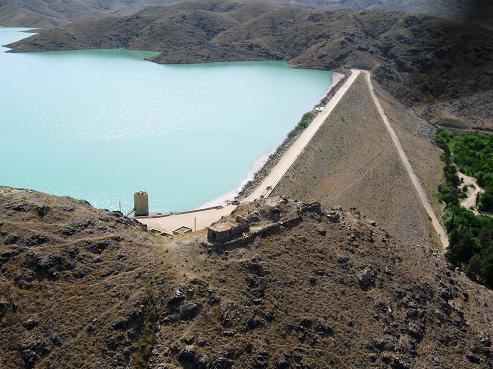
After completion of the dam in 1952, it functioned well for many decades. However, the irrigation system and its operation was neglected during the Soviet Union's occupation of the country in 1979 and later by the Taliban who ruled till the end of 2001. A technical appraisal of the status of the project carried out by experts from Agriculture and Agri-Food Canada in 2008 revealed that the siltation in the reservoir had resulted in reduction of the storage capacity by 34%, irrigation system had deteriorated resulting in loss in canal discharge to the extent of 70% on account of siltation, evaporation, seepage and other defects. The intake tower of the dam was not functioning properly and control valves were leaking, spillway capacity to discharge flood waters was inadequate, and there was no operational plan. Even before the rehabilitation of dam and canal system could be initiated, as first priority the mines in the rocky areas of the reservoir area had to be cleared which was done by the Corps of Engineers. After this operation, a two-phase rehabilitation plan was launched.

On completion of the rehabilitation works by raising the height of the dam and related appurtenant works and the improvements of the canal system the volume of available water would be increased from 300 million cubic meters to 484 million cubic meters, which would facilitate irrigation to command areas in the districts of Shah Wali Kot, Arghandab, Zheri, Panjwai, Maiwand, Dand and Daman and also help in planning and building a 10 MW capacity hydropower station to generate electricity.
Phase 1
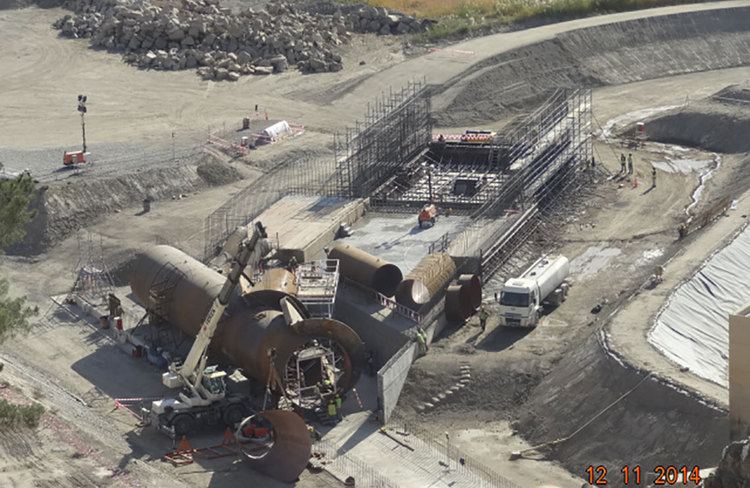
In the first phase the rehabilitation works were carried out by the Canadians during the period from 2009 to 2012 under the project titled "Arghandab Irrigation Rehabilitation Project" at a cost of $43,949,517. Desilting and repairs to 77.6 kilometres (48.2 mi) of main canal and about and 415 kilometres (258 mi) of branch and minor canals, replacement of water valves and erecting gates to improve control over the flow of water supplying to farm fields from the reservoir of the Dahla Dam were carried out.
Phase 2
Raising the height of the dam is seen crucial to increasing the volume of available water, which has reduced to 300 million cubic meters from 484 million cubic meters water. The rehabilitation works planned during this phase involves raising the height of the dam by 8 metres (26 ft), of saddle dams by 5–6 metres (16–20 ft), spillways, and modifying structural, hydraulic and electro-mechanical features. The work has been initiated by the United States Army Corp of Engineers and is slated for completion by 2017. This component of the project is estimated to cost US$308 million with the Finance Ministry of Afghanistan providing $38 million and the balance as USAID.
